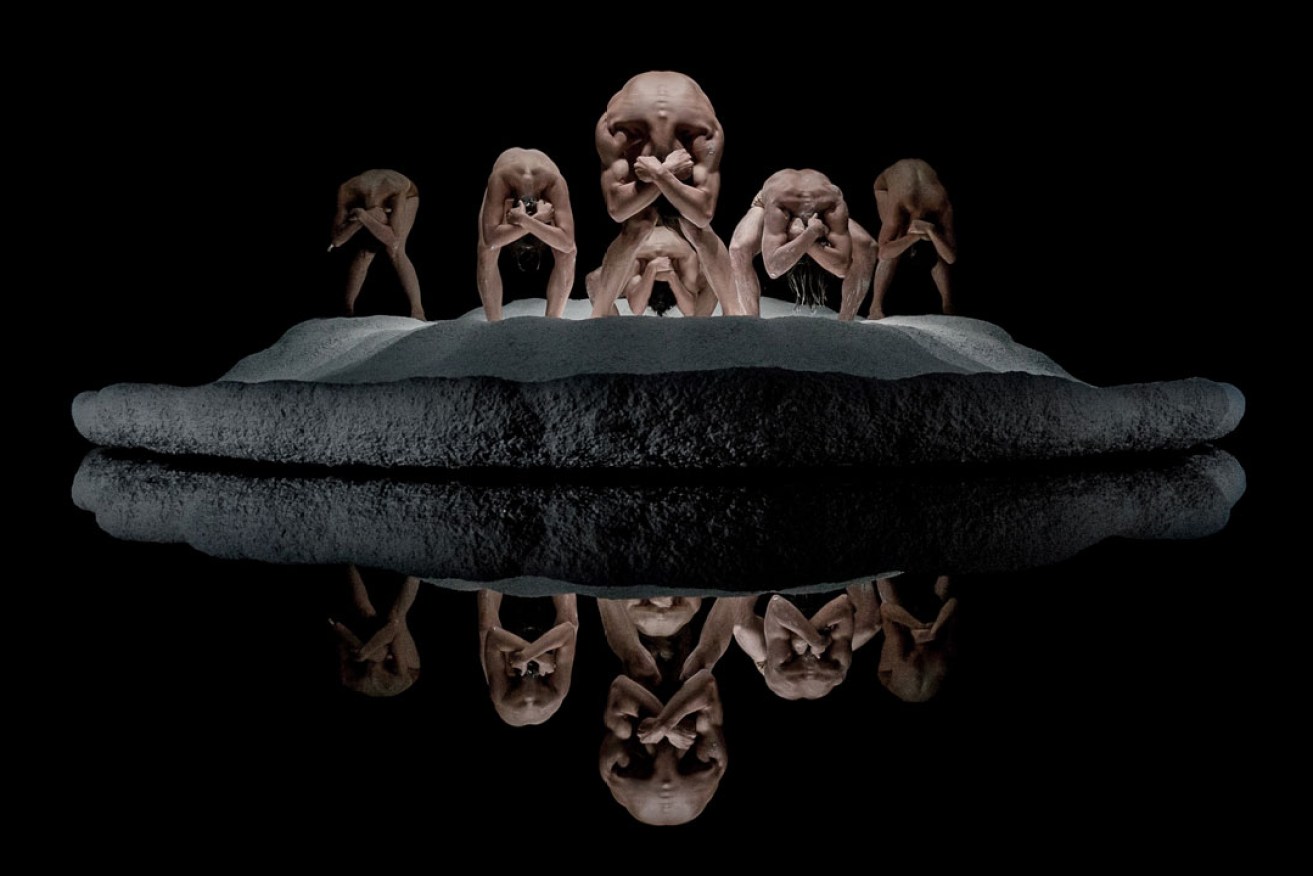OzAsia review: Vessel
Life, the universe and everything; Vessel takes on big philosophical ideas and delivers a mind-blowing, other-worldly experience.


Belgian-Japanese co-production Vessel. Photo: Yoshikazu Inoue
Known for his collaborative work with the likes of Thom Yorke, Anthony Gormley and Marina Abramovic, Belgian choreographer Damien Jalet has made a career of melding dance with other artforms. His latest project is his most conceptually ambitious yet.
Vessel, a collaboration between Jalet and Japanese visual artist Kohei Nawa, blurs the boundaries between dance and sculpture, human and inhuman, primordial and futuristic in a performance that’s intensely beautiful and strangely unsettling.
It starts in utter darkness. Can’t-see-a-hand-in-front-of-your-face darkness. And can’t-hear-a-pin-drop silence. As a cold light bleeds across the watery stage, a faint noise begins; the liquid plop and bubble of swamps. Or volcanoes. Or primordial soup.
Centre stage, an island (or mountain, or cloud) of white foam floats on the glass-black water. Strange sculptural forms reveal themselves as impossibly tangled limbs – entities that could have been sculpted by Patricia Piccinini. The twined dancers unravel like cells dividing and new forms emerge; this isn’t just the beginning of the show, it’s the beginning of everything.
Ghostly whooshes and clangs are laid over thumping primal beats in a spectral soundscape (Marihiko Hara and Ryuichi Sakamoto) that delicately outlines this other world.
Clever lighting (Yukiko Yoshimoto) picks out the sculptural forms of the bodies, rendering them Other, and highlights the reflective quality of the water until the whole stage appears to be floating in space.
https://vimeo.com/199426810
Tucked under shoulders or flung back out of sight, the dancers’ faces are hidden throughout the show, a move aimed at “conferring anonymity by concealing gender and identity and hinting at the existence of some non-human entity”, Jalet explains.
It works. It’s easy to believe that the dancers, folded over and scampering round the stage with their arms fashioned into ancient, mask-like faces, are not humans but curious new life-forms. The dark gaps between nape of neck and upper arms become eyes, made wide with astonishment or creased in pleasure with the mere flex of a shoulder muscle. The lack of human face in the performance is weirdly disconcerting and yet it’s hard not to feel an affinity with these funny creatures. They are, after all, quite like us.
In the final scene a statuesque human form is birthed from the white gloopy landscape, barely having time to lose its vernix before sinking back down and becoming submerged. It could be a depressing message about the imminent demise of humanity but somehow it’s not. Somehow it’s a quiet reminder of the natural order of things and the insignificance of humans within the bigger picture.
In dehumanising the human form, Jalet and Nawa have drawn us closer to a recognition of our place in the universe, our connection to all that is and was and will be. It’s big, big stuff and it’s exquisitely executed with vision, ingenuity and compassion.
Vessel was performed at the Dunstan Playhouse as part of the 2019 OzAsia Festival, which continues until November 3. You can see the full program here, and read all InDaily and CityMag’s OzAsia stories and reviews here.




